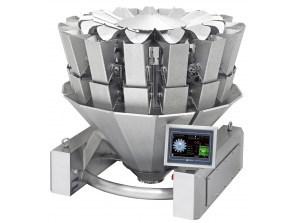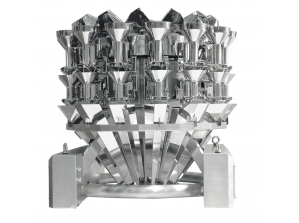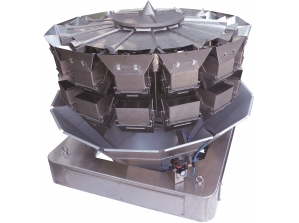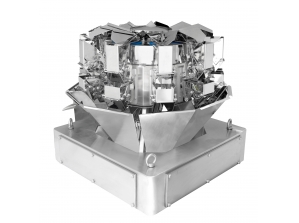Top Aviator Games – Experience Thrilling High-Flying Adventures
Since the dawn of aviation, the thrill of soaring through the skies has ignited imaginations and ambitions alike. Whether you are a seasoned flyer or an enthusiastic newcomer, the realm of how to play aviator game aerial simulations offers a captivating way to explore the multifaceted world of flight. From realistic cockpits to breathtaking landscapes, the following experiences promise to elevate your understanding of being a pilot.
Among the myriad of options, some standout titles offer meticulous attention to detail and sophisticated physics engines. For those who value realism, one might consider exploring the intricacies of a simulator that incorporates real-world weather effects and authentic aircraft handling. The ability to navigate through changing conditions and varying terrains sharpens skills critical to true pilots.
If excitement and competition drive your passion, there’s a collection of fast-paced aerial contests that push the envelope of skill and strategy. Players can engage in thrilling dogfights or challenging races, testing their reflexes and decision-making under pressure. Titles that provide multiplayer modes can significantly enhance the adrenaline level, as competing against others adds an exhilarating layer to the experience.
Moreover, certain platforms allow for extensive customization, letting enthusiasts design their own aircraft or modify existing ones, bringing a personal touch to their soaring machines. This creative aspect not only deepens engagement but also connects players to the intricacies of aviation engineering.
Venturing into this diverse selection of flight experiences opens the door to countless opportunities for growth and enjoyment, catering to all levels of flying aficionados. Whether flying solo or battling in the skies, the excitement of aviation simulations is boundless and beckons to be explored.
Choosing the Right Flight Simulation for You
Finding the perfect flight simulation can be a challenge given the variety of options available. Here’s how to pick a title that aligns with your preferences and skill level.
-
Determine Your Skill Level:
Whether you are a novice or an experienced pilot, select a platform that caters to your expertise. Beginners might appreciate simplified controls and tutorials, while seasoned players may seek realistic mechanics and comprehensive cockpits.
-
Consider Flight Types:
Different experiences focus on various aspects of aviation. Are you interested in commercial airliners, military aircraft, or perhaps aerobatics? Choose a product that features the type of flying you want to explore.
-
Evaluate Graphics and Realism:
The visual and audio fidelity can significantly impact immersion. High-quality graphics contribute to a believable environment, while sound design enhances the experience. Assess whether you prefer a more arcade-like feel or intricate simulation details.
-
Multiplayer Versus Solo Experience:
Decide if you enjoy flying solo or want to engage with others online. Multiplayer functionalities can add excitement, allowing for collaborative missions or competitive challenges. Solo options may be ideal for immersive exploration and mastering flying techniques.
-
Modding Community:
Evaluate if the simulation supports community-created content. Having access to modifications can greatly expand the range of aircraft and settings, enhancing replayability and personal enjoyment.
-
Hardware Requirements:
Ensure your gaming setup meets the necessary specifications. Check for compatibility with various controllers, pilot yokes, and VR headsets if you want to fully engage with the environment.
By identifying these key factors, you can confidently select a flight experience that matches your interests and enhances your skills. Take the time to research and test different titles to find the one that will keep you enthralled in the captivating world of flight simulation.
Understanding Game Mechanics and Controls
Mastery of mechanics and controls in flying simulations significantly enhances player engagement. The intricacies of flight dynamics often dictate how players maneuver their aircraft, influencing both performance and experience. Familiarity with throttle management, for instance, is crucial; players must learn to balance power and lift. Proper use of the throttle ensures that aircraft can ascend or descend smoothly, affecting altitude control and speed.
Roll, yaw, and pitch represent critical axes of movement. Players should practice these axes in tandem to maintain stable flight. For instance, yawing to the left while pitching up can create tight turns but requires adept control to prevent stalls. Advanced settings allow for fine-tuning sensitivity, enabling smoother inputs during rapid flight changes.
Understanding weather conditions enhances realism. Wind patterns can alter aircraft handling; gusts can destabilize flights, necessitating adjustments in control inputs. Players should utilize in-game weather systems to simulate challenging scenarios, improving their adaptability and skill set.
User interfaces play a significant role in conveying essential flight data. The heads-up display (HUD) typically presents altitude, speed, and navigation information. Players must learn to interpret these indicators quickly, as situational awareness is vital during intense moments, such as evasion from adversaries or navigating through challenging terrain.
Customizable control schemes allow for personalized gameplay experiences. Many simulations offer a range of configurations for keyboard, mouse, or joystick setups. Experimenting with different layouts can lead to improved comfort and efficiency, as individual preferences can vary widely among players.
Training missions often serve as an introductory phase for understanding various aircraft types and their unique flight characteristics. Completing these scenarios not only builds foundational skills but also allows players to explore advanced maneuvers without the pressure of competitive environments.
In competitive situations, situational awareness becomes paramount. Understanding enemy behavior and anticipating their moves can provide a tactical advantage. Players should regularly practice targeting systems to enhance precision during engagements, focusing on lead indicators and impact predictions.
In summary, comprehending the game mechanics and honing control techniques are vital for succeeding in aerial challenges. Regular practice and adaptation to various flight models will unquestionably elevate a player’s capabilities and enjoyment in the skies.
Identifying Your Preferred Aircraft Types
Choosing the right type of aircraft is crucial for enhancing your simulation experience. Different categories serve distinct purposes and appeal to various interests. Recognizing these categories empowers you to select the one that aligns best with your preferences.
First, consider general aviation aircraft. These planes, such as single-engine Cessnas or multi-engine Pipers, offer a hands-on experience with piloting smaller planes. They are perfect for those who appreciate maneuverability and skillful navigation in varied environments.
Next, military jets present a unique thrill, characterized by speed and advanced technology. Fighters like the F-16 or attack aircraft such as the A-10 showcase sharp handling and impressive firepower, appealing to enthusiasts fascinated by aviation prowess and tactical maneuvers.
If you are drawn to the grandeur of commercial aviation, explore airliners such as the Boeing 747 or Airbus A380. These aircraft embody the challenges and intricacies of flying large passenger planes, offering insight into the complexities of modern aviation operations, including navigation and in-flight management.
For those who prefer the allure of vintage flying, classic models such as the Spitfire or the DC-3 evoke nostalgia. These aircraft provide a glimpse into the history of aviation and often require a different set of flying techniques that can be both enjoyable and educational.
Another captivating choice is the world of gliders and sailplanes. These aircraft focus on the art of soaring, allowing pilots to experience silent flight and the delicate balance between lift and gravity. This category is ideal for those fascinated by natural elements and aerodynamics.
Ultimately, pinpointing which aircraft type resonates with your interests and aspirations can enhance your immersive experience greatly. Whether it’s the agility of light aircraft, the power of jets, the elegance of airliners, the charm of vintage planes, or the serenity of gliders, each choice offers a unique perspective on flying and piloting challenges.
Exploring Single vs. Multiplayer Options
When engaging with flight simulations, players often face a choice between solo endeavors and multiplayer challenges. Each mode offers distinct experiences that cater to various preferences and skill levels.
Single-player mode presents a chance for personal skill enhancement. Players can undertake missions, practice maneuvers, and progress through scenarios at their own pace. This mode is ideal for honing tactics, navigating environments, and mastering aircraft controls without the pressure of competing against others. Titles often include detailed tutorials and missions of increasing difficulty, which can help novice pilots build confidence and expertise.
On the flip side, multiplayer settings invite camaraderie and competition. Collaborating with other users can elevate the excitement, allowing for squadron missions and joint operations that require teamwork and strategy. Engaging with fellow enthusiasts opens avenues for sharing tactics and methods, while direct interactions can enhance the overall experience. Many platforms feature ranked matches, events, and community-driven challenges, fostering a healthy competitive spirit.
For players who appreciate interaction, online simulations provide regular updates and community support, creating a dynamic atmosphere. On the other hand, those who prefer a more focused approach may find single-player campaigns more rewarding. Each mode offers opportunities for growth, catering to distinct play styles and preferences.
Choosing the right option often comes down to personal goals and social preferences. Whether seeking solitary refinement or collaborative thrills, both paths lead to engaging experiences that can shape one’s virtual piloting skills.
Immersive Environments in Flight Simulations
When it comes to flight simulations, the surrounding environments play a crucial role in enhancing the realism of the experience. Developers invest significant effort in creating stunning landscapes, weather systems, and atmospheric effects that can captivate players. The goal is to immerse users in a detailed world where every flight feels authentic.
One way to achieve this realism is through high-quality textures and models. Realistic terrain, complete with mountains, forests, and urban areas, helps players feel as though they are navigating through a true representation of our planet. For instance, some simulations utilize satellite imagery combined with 3D modeling to create lifelike representations of various locations. This attention to detail adds depth to the experience.
Weather dynamics also contribute immensely to the immersion factor. Systems that simulate real-time weather changes, including wind patterns, turbulence, and precipitation, allow players to face challenges that pilots encounter in reality. Advanced simulations may even incorporate seasonal changes, offering varied experiences based on the time of year.
The soundscape also demands attention. High-fidelity audio effects, including engine sounds, environmental noises, and radio communications, can significantly enhance the player’s sense of presence within the virtual cockpit. Players often report heightened adrenaline levels when they hear the roar of engines or the rush of wind against the airframe.
To further elevate immersion, developers often integrate detailed cockpits with interactive displays and instruments. They strive for accuracy in replicating cockpit environments, where every switch and dial responds realistically. This meticulous design fosters a connection between the player and the aircraft, mimicking the experience of real pilots.
In summary, the combination of realistic terrains, dynamic weather, immersive audio, and authentic cockpit interfaces contributes to a stimulating virtual environment. Players seeking a more engaging flight experience should prioritize simulations that excel in these areas, ensuring that their time in the skies is both captivating and accurate.




